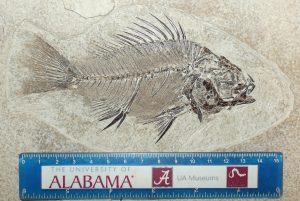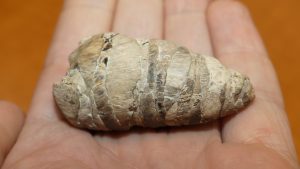
Full of enthusiasm and humor, Steve Trash educates children about science in the aptly named Steve Trash Science show. In the second season airing this summer on Alabama Public Television (PBS), one of the episodes that aired on July 8th in Alabama covered fossils.
Steve contacted UA Museums’ Curator of Paleontology Dr. Adiel Klompmaker in 2022 for scientific input and images of fossils. In the new “Fractions/Fossils” episode made for kids, over a dozen fossils from the UA Museum’s paleontology collection and some on display in the Alabama Museum of Natural History exhibits in Smith Hall are shown.
“Kids are naturally curious about everything around them,” Steve said. “Our goal at Steve Trash Science on PBS is to inspire them to be curious about the natural world and our natural world’s history. Fossils are an incredibly important aspect of that amazing story.”

“Many children are fascinated by dinosaurs, so it’s a no-brainer that we write and produce an introduction to fossils on Steve Trash Science,” Steve added. “Also, and probably more importantly, one of my best writers – Michael Goudeau loved fossils when he was a kid, so he was super interested in writing an episode on fossils. So we did!”
Although the episode is geared toward children aged 6–10, Steve said audiences that actually watch the shows on Alabama Public Television or elsewhere have skewed all the way up to grandparents and down to kindergarten age kids.

The new episode shows spectacular fossils from the UA Museums’ paleontology collection such as mammoth hairs, sea stars, clams, plants, insects, fish, a dinosaur footprint, a burrow, the Alabama state fossil Basilosaurus cetoides (whale), bite marks on bone, and even fossil poop.
“This particular use of our collection exemplifies that our fossils are not only used for research,” Dr. Klompmaker said. “Fossils of our growing collection feature in about 10 scientific writings per year on average, but we also use specimens in classes, for student internships, during collection tours, for outreach events like National Fossil Day, in permanent or temporary exhibits in Smith Hall, and even for TV shows! We are very grateful to have had the opportunity to help Steve educate kids about fossils.”
The episode, of which the last part is about fossils, can be seen freely online on the Alabama Public Television website and will air around the country in the fall. The episode is course of study correlated for Alabama school teachers.